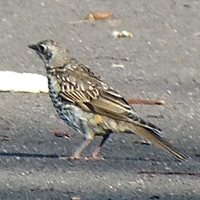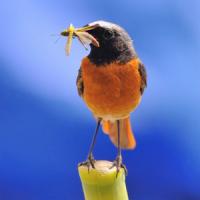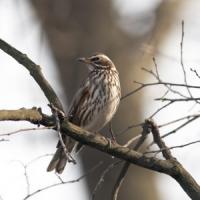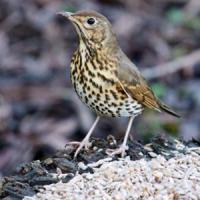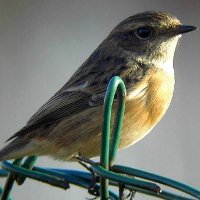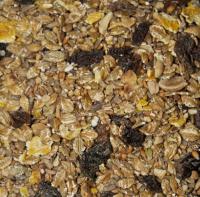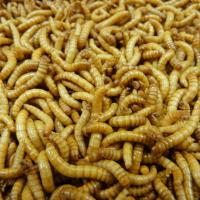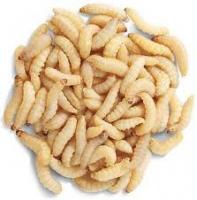- Home
- FAQs
- Customer Video Gallery
- Customer Photo Gallery
- Bird Facts
- Bird Food Blog
- Bird Information
- Feeding Advice
- Small Animal Information
- A to Z of Guinea Pigs
- A to Z of Hamsters
- A to Z of Rabbits
- Basic Care for Guinea Pigs
- Basic Care for Hamsters
- Basic Care for Rabbits
- Basic care for Chinchillas
- Basic care for Ferrets
- Basic care for Gerbils
- Basic care for Mice
- Basic care for Rats
- Buying a Healthy Small Animal
- Does your Reptile need a Licence
- Equipment for Ferrets
- Equipment for Hamsters
- Equipment for Mice
- Equipment for your Chinchilla
- Equipment for your Gerbil
- Equipment for your Guinea Pig
- Equipment for your Rabbit
- Keeping a House Rabbit
- Dog Information
- Cat Information
- Customer Information
- Fat Balls
- Suet Pellets
- Straights
- Seed Mixes
- Suet Treats
- Bird Feeders
- My Account
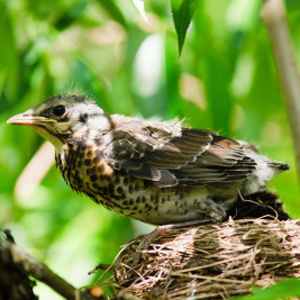
| Scientific Name | Turdus pilaris |
| Breeding | April-June |
| Fledge Days | 12-16 |
| Incubation Days | 11-14 |
| Lifespan | 3 |
| Number of Clutches | 1-2 |
| Number of Eggs | 5-6 |
| Size | 26cm |
| Weight | 100g |
| Wingspan | 40cm |
Bird Family : Chats and Thrushes
Fieldfare Facts - Information About Fieldfare
Fieldfare - Turdus Pilaris
The Fieldfare along with the Redwing is another winter visitor to the UK from Northern Europe, like the Redwing it is an extremely rare breeder in far northern Scotland. During winter it is fairly common throughout the UK. It is a large Thrush, similar in size to our Mistle Thrush, but when seen well is far more striking in plumage.
Identification:
Adult
- Adult males and females are alike.
- Unlike all our other Thrushes, the Fieldfare is a predominately grey Thrush.
- The Fieldfare is a common Thrush in winter if looked for in the right habitat.
- It is a large brightly coloured thrush compared to Song and Mistle.
- The Fieldfare is similar in size to Mistle Thrush, being slightly smaller, about 27cm.
- Upperparts; tail is long and black, uppertail coverts, rump and back are a beautiful pearly grey, mantle is brown.
- Wings are grey brown and show an whitish shoulder patch.
- The head is grey with a white eyestripe, black lores, thin streaked moustacial stripe, dark streaked pale buff throat and grey ear coverts.
- The bill is two toned yellow and grey.
- Underparts; breast is washed with a bright ochre/buff, heavily streaked and spotted black, flanks again are buffy, with arrow shaped black streaking.
- Belly and vent white, undertail coverts white.
- Bill is yellow with dark tip, eye and legs dark.
Juvenile
- Juveniles appear from April onwards and are similar to adults, however we are very unlikely to see these unless in a breeding area.
- Two tone bill, yellow and black, eye black, legs pale.
Status and Distribution
The Fieldfare occurs throughout the British Isles in winter. It starts arriving in September with first landfall on the east coast; it then starts to filter through the country in the following weeks/months. We have a very small breeding population of no more than 15 pairs, these are confined to the far north in the Scottish Highlands. Winter populations stand at around a million individuals.
Habitat/Food
Fieldfares occur in all habitat types throughout the UK, woodlands, parks, gardens, farmland, hedgerows indeed any open country habitat.
In the garden, like all thrushes, the Fieldfares enjoys snails, earthworms, Mealworms, Berries and Fruit, as well as Suet and Fat Balls .
Song/Call
Several call notes; most often on cold Autumn nights during migration, a shout buzzy ’Key ’ and a harsh chattering ‘chack chack ckack’
Song is very rarely heard in the UK and consists of simple chacking notes, not as musical as any of our other thrushes.
The following food is favoured by Fieldfare






